How to update OpenGL on your PC
Purpose
This article will instruct you on how to update OpenGL on your PC/Laptop
Benefits
Users will experience higher performance on their PC/Laptop by updating the drivers hence allowing for a smoother and faster experience on BlueStacks
Audience
Users facing issues with respect to OpenGL
BlueStacks versions affected
All versions
Geo’s affected
All geo's
What is OpenGL?
OpenGL, which is short for Open Graphics Library is the standard 3D Graphics API (Application Program Interface) and is often required in some games and software applications. OpenGL provides a software API so that apps may directly leverage the capabilities of the GPU to improve the performance and user experience.
Benefits of OpenGL in Android applications
Updating the OpenGL version on your PC/Laptop will enable you to run applications that require OpenGL 3.1 and above thus providing a much smoother experience across various Android applications on BlueStacks. The steps to update the OpenGL version are explained below.
Check OpenGL version
The first step upon receiving any sort of OpenGL error would be to check what OpenGL version you currently have on your PC/Laptop. For the following steps, we will be using Intel Graphics Control Panel which comes as a default application in Intel PC/Laptops.
Step 1 - Open Intel Graphics Control Panel by pressing "CTRL+ALT+F12". You should see the application as shown below. There may be some minor UI changes depending on what Intel Processor you have and also on what Windows version you are on. Click on "Options and Support" as illustrated below.
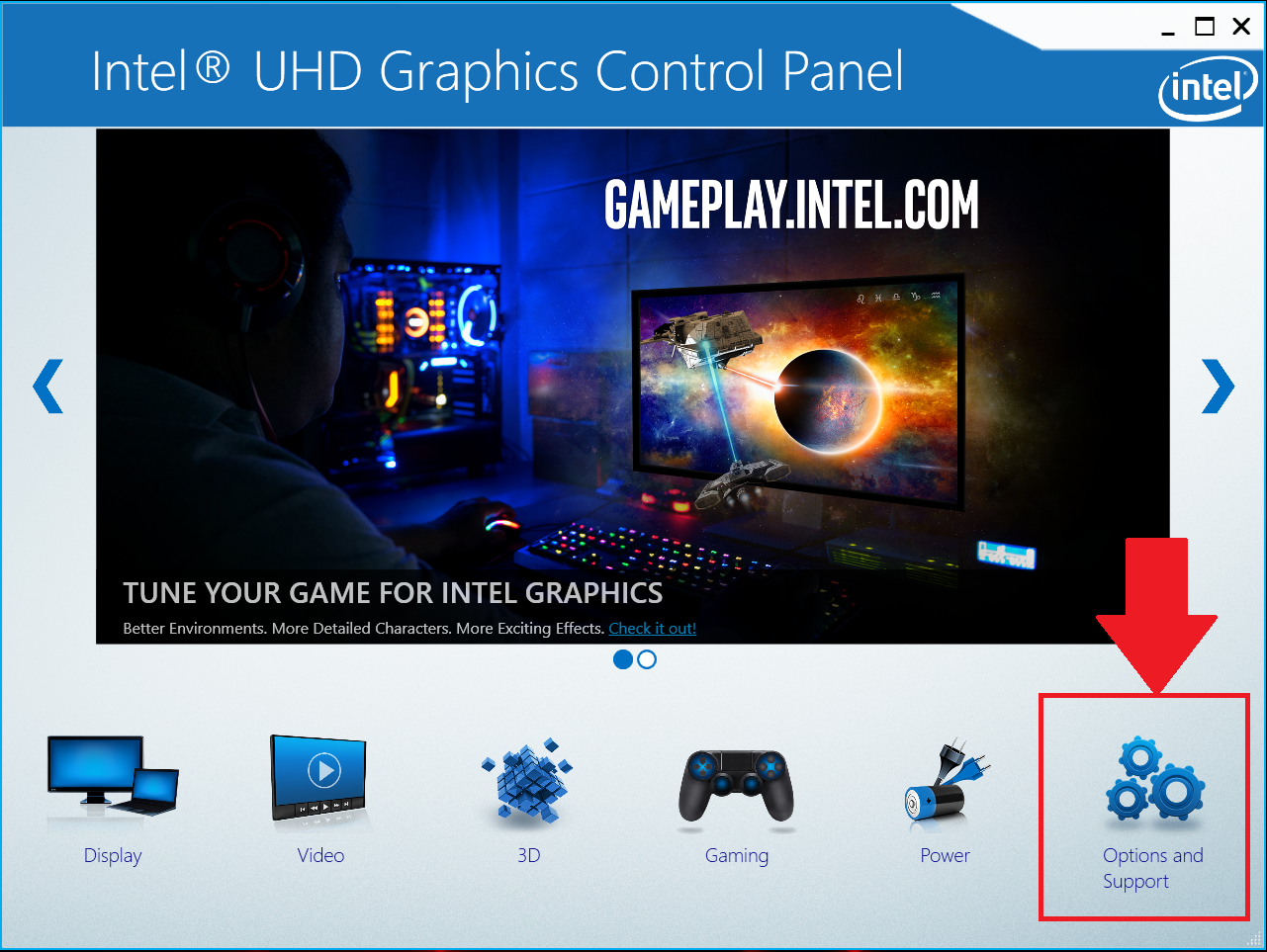
Step 2 - You will then be shown your OpenGL version as shown below.
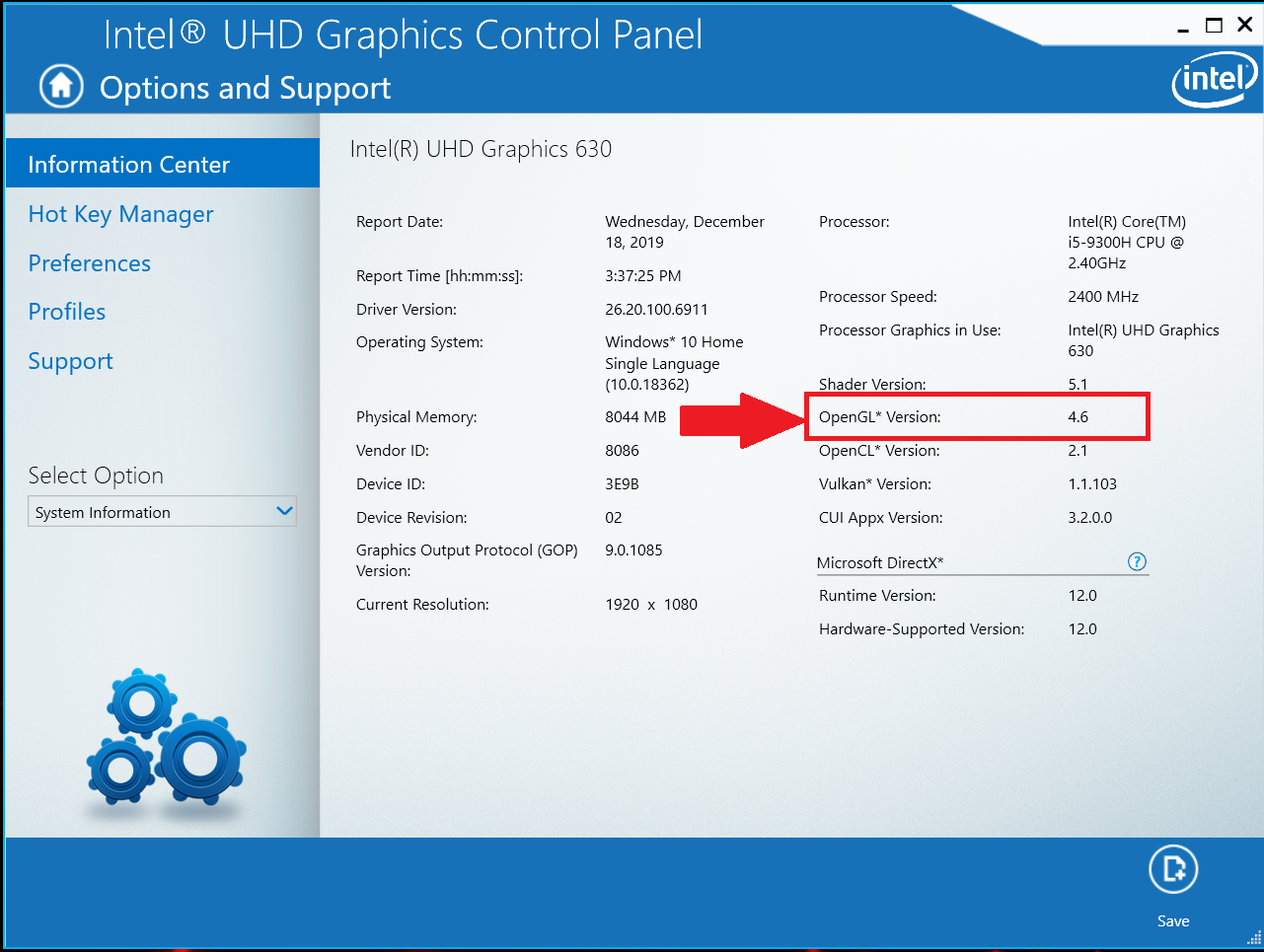
Your next step, if required, should be to update your OpenGL drivers. This is explained in the steps below. OpenGL drivers can be updated by updating your Intel Graphics card and/or by updating your GPU drivers.
Updating OpenGL version
Updating your Intel Graphics card and/or GPU can be done through "Device Manager". You can access Device Manager by searching for "Device Manager" in the Start menu.
Step 1 - After opening Device Manager click on "Display Adapters"
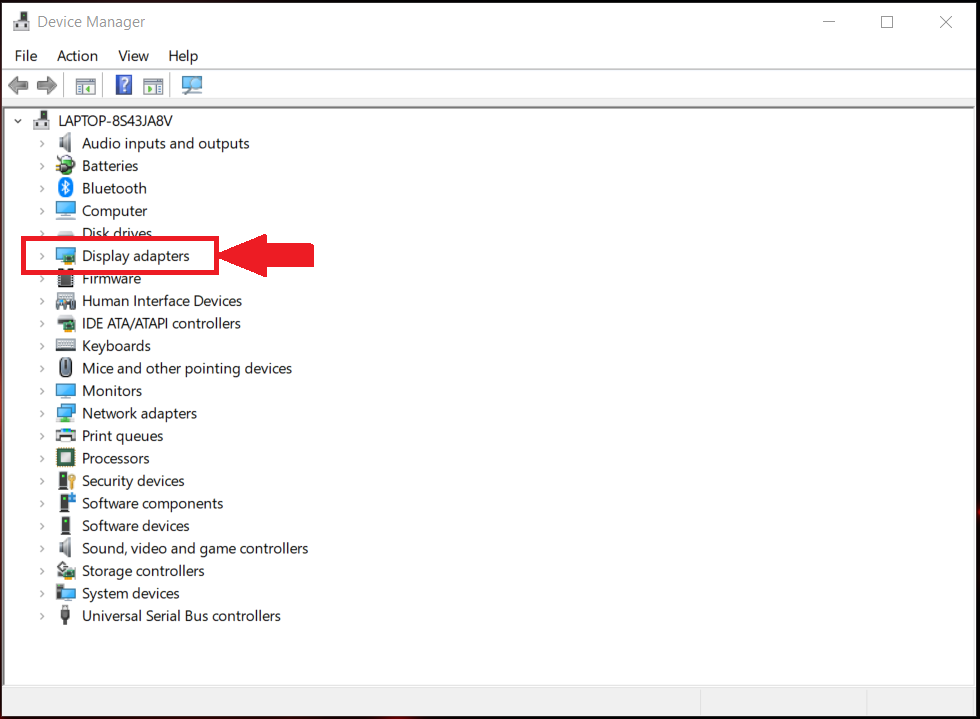
Step 2 - You will then be shown the available graphics cards on your PC/Laptop,
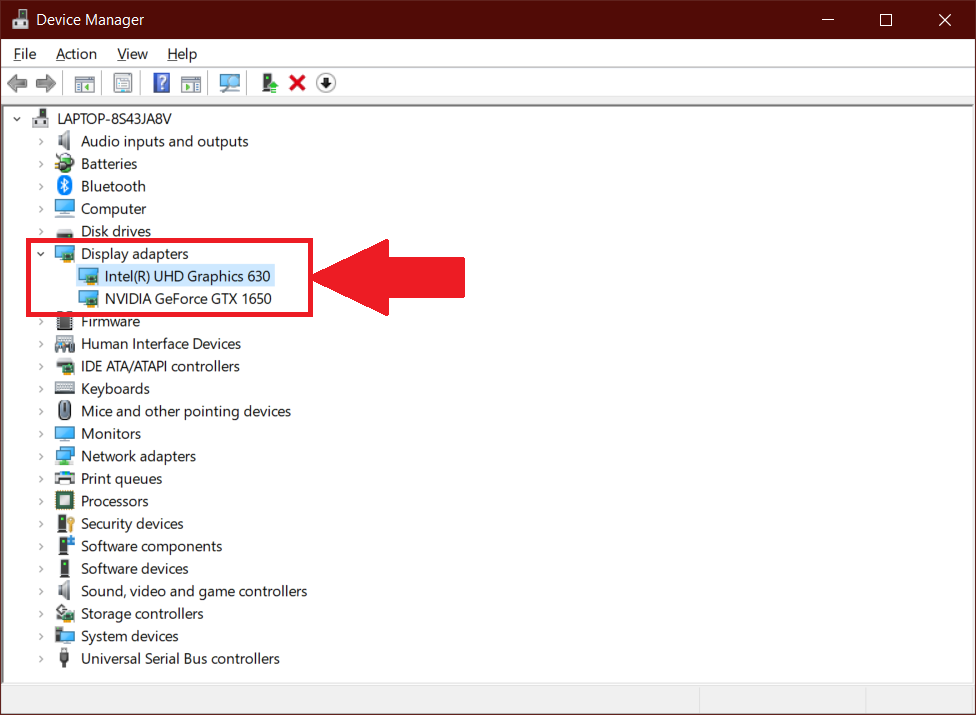
Step 3 - To update your OpenGL versions, update the drivers of the graphics cards available on your PC/Laptop. To update, right-click and choose "Update drivers" as shown below.
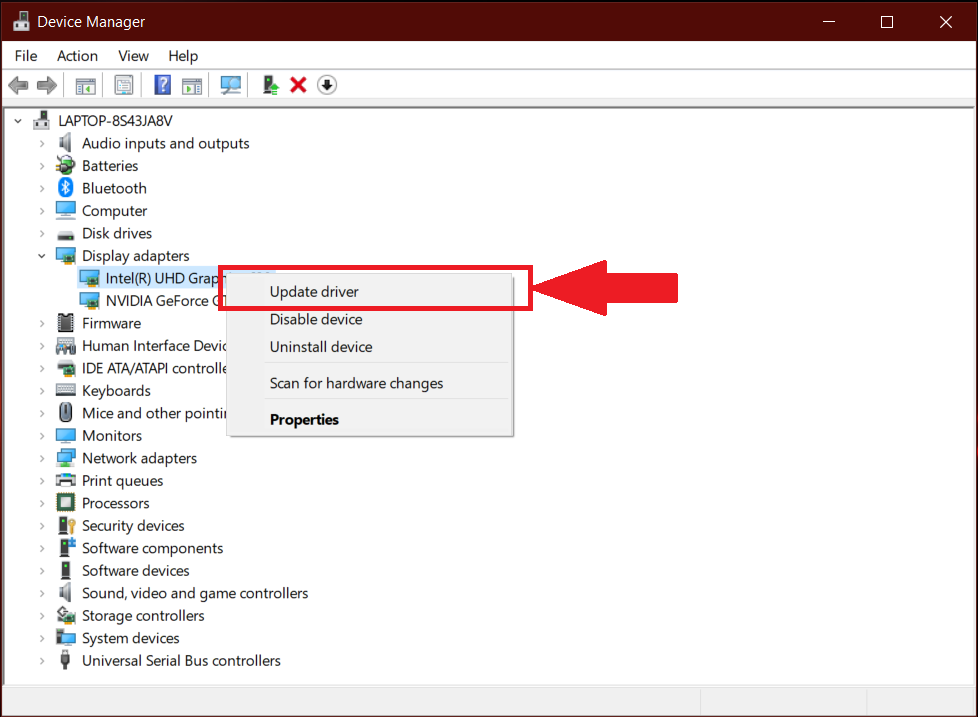
Step 4 - You can then choose to have Windows search automatically for the driver software or install it yourself. To avoid any errors, we suggest to let Windows search automatically as illustrated below.
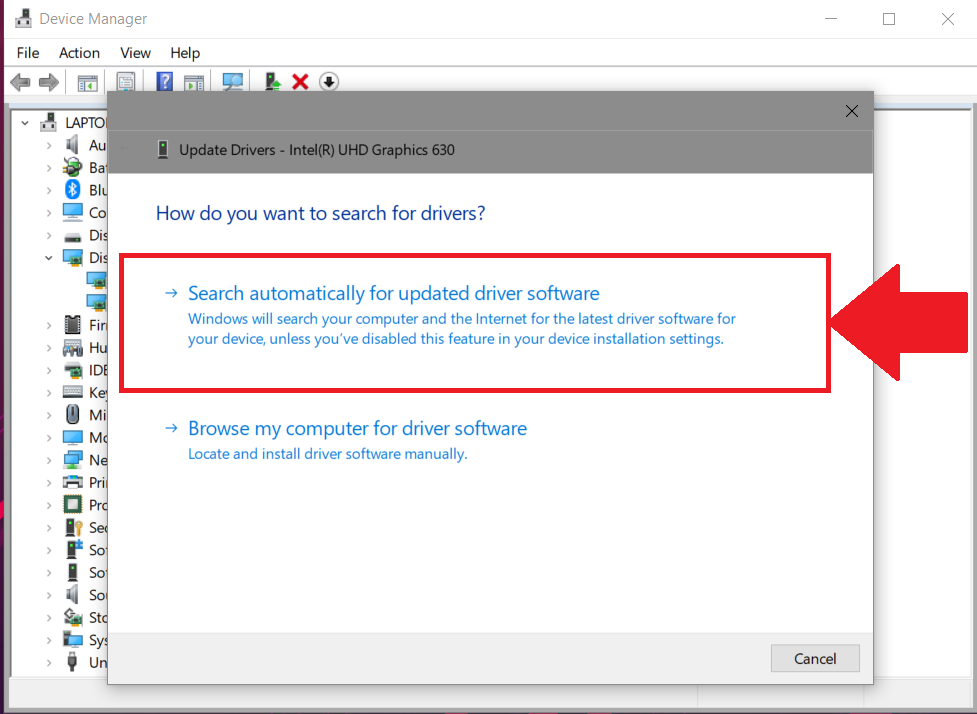
NOTE: To update your graphics card, either NVIDIA or AMD, you can follow the steps mentioned above or can visit the respective manufacturer's website and update drivers from there.
For NVIDIA GPU users there is another workaround explained below to increase performance. By default, this option is selected but since we care about you, we suggest you check this again. The steps are explained below.
Step 1 - Go to "Settings" in BlueStacks by either clicking on the hamburger menu or the gears icon on the bottom right of the sidebar as shown below.
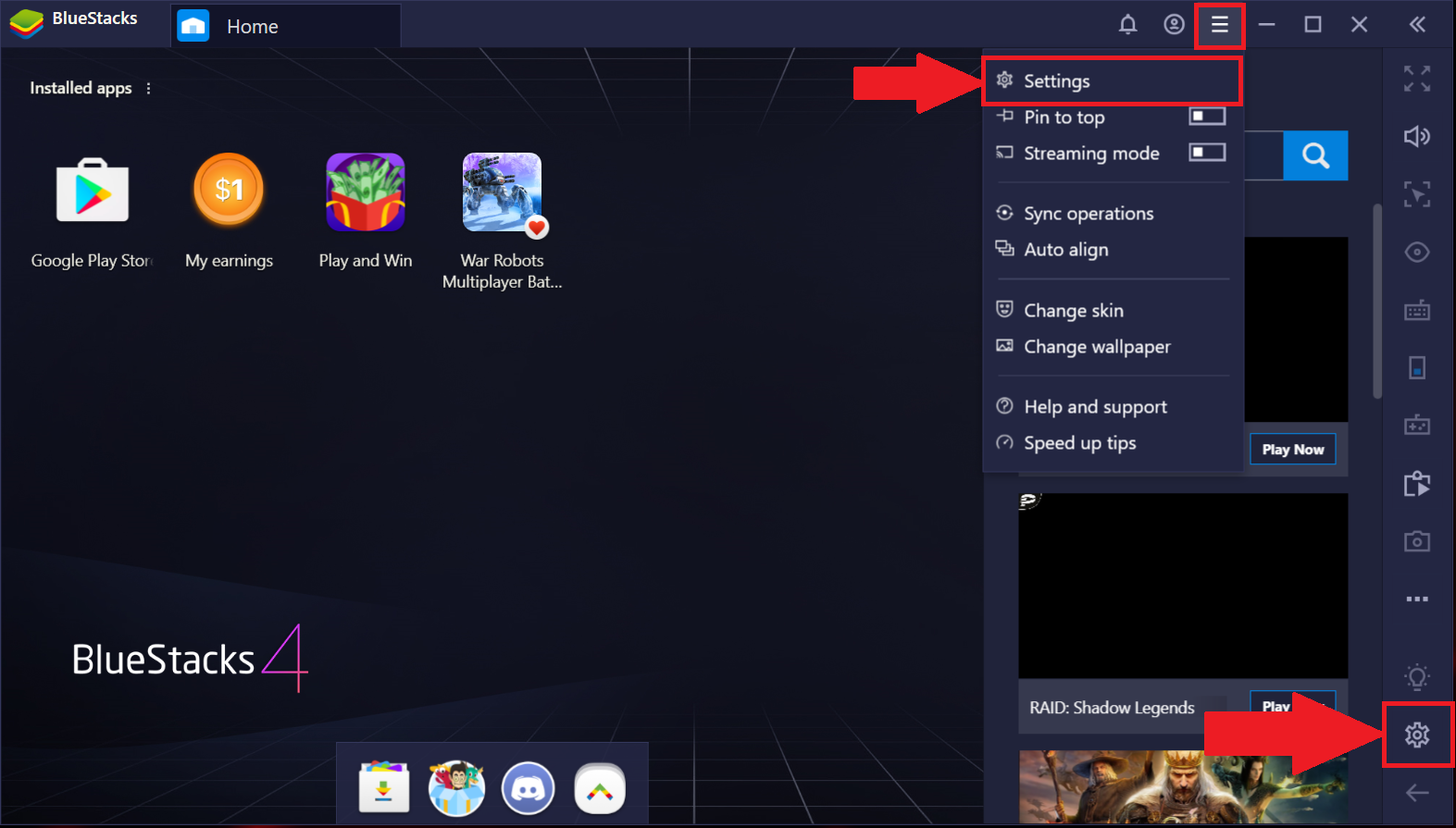
Step 2 - Go to "Engine" and select "Prefer dedicated computer graphics (NVIDIA only)" as shown below.
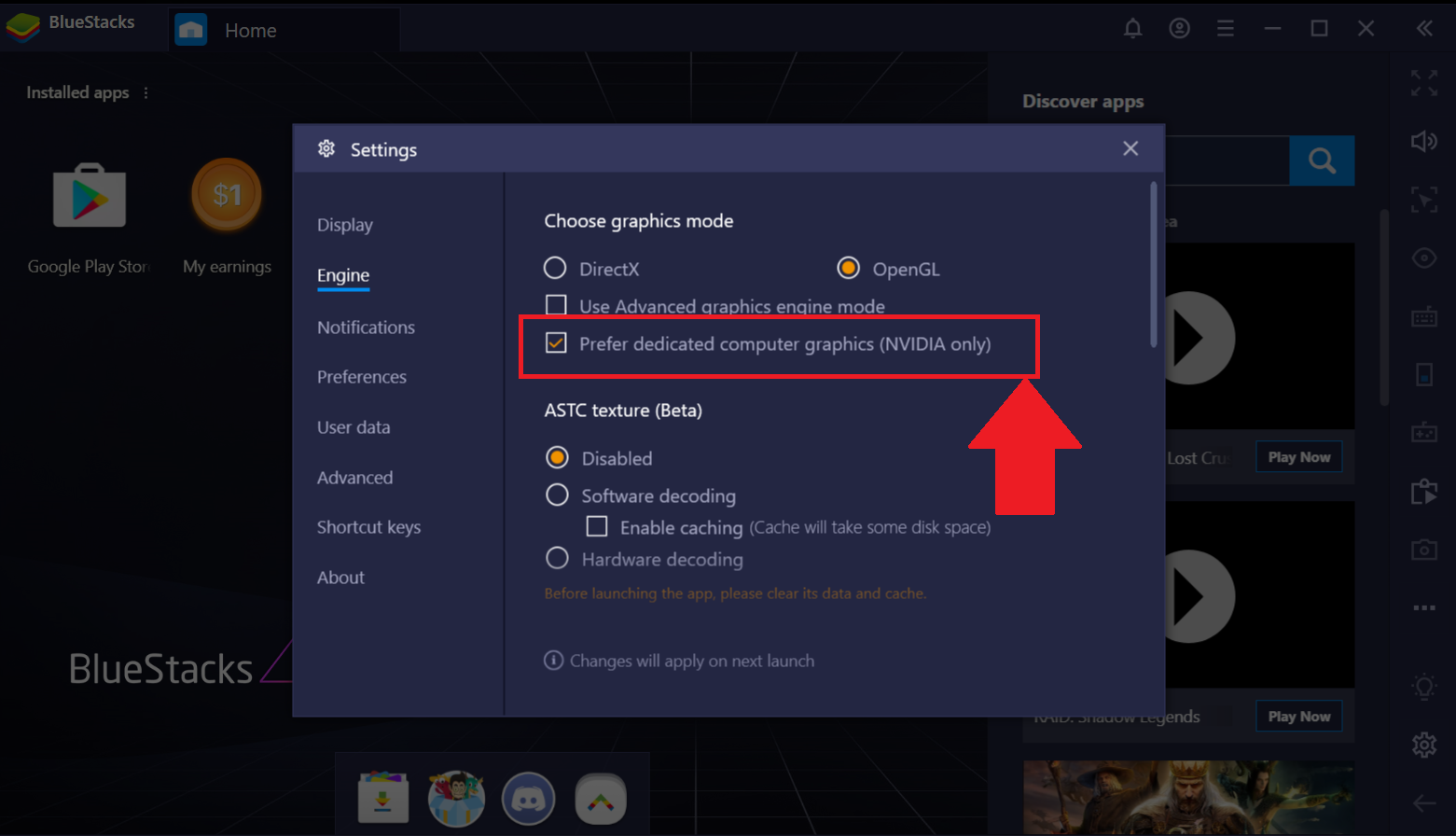
Workaround for AMD users
1) Changing BlueStacks in AMD Radeon application to high performance.
NOTE: The UI might change according to different versions of Radeon you are currently on, but the general gist of this step is to set "BlueStacks.exe" to high performance in the application itself as explained below.
Step 1 - Open Radeon application and click on "System" tab on the top right.
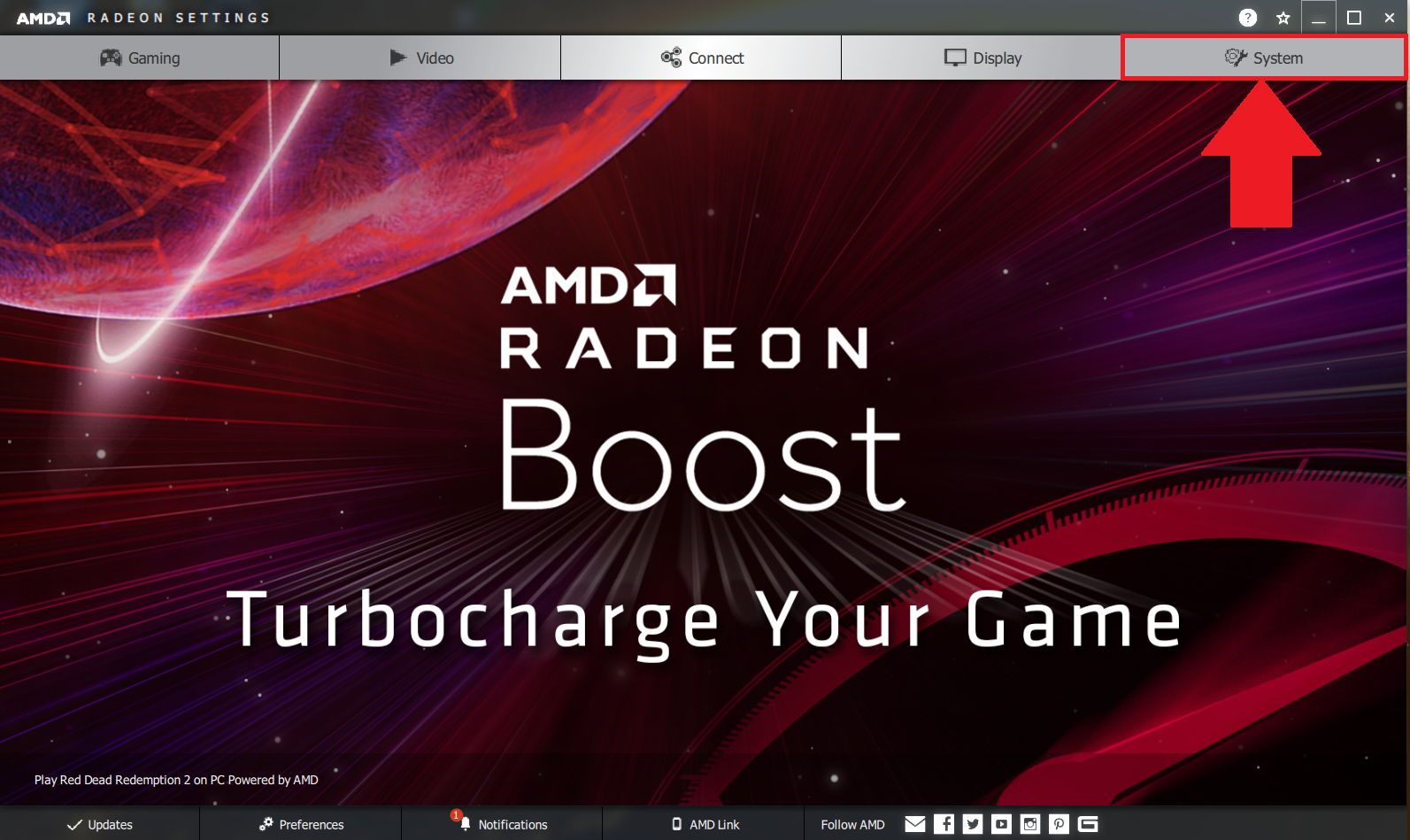
Step 2 - In settings menu, switch to "Switchable Graphics" tab on the top right as shown below.
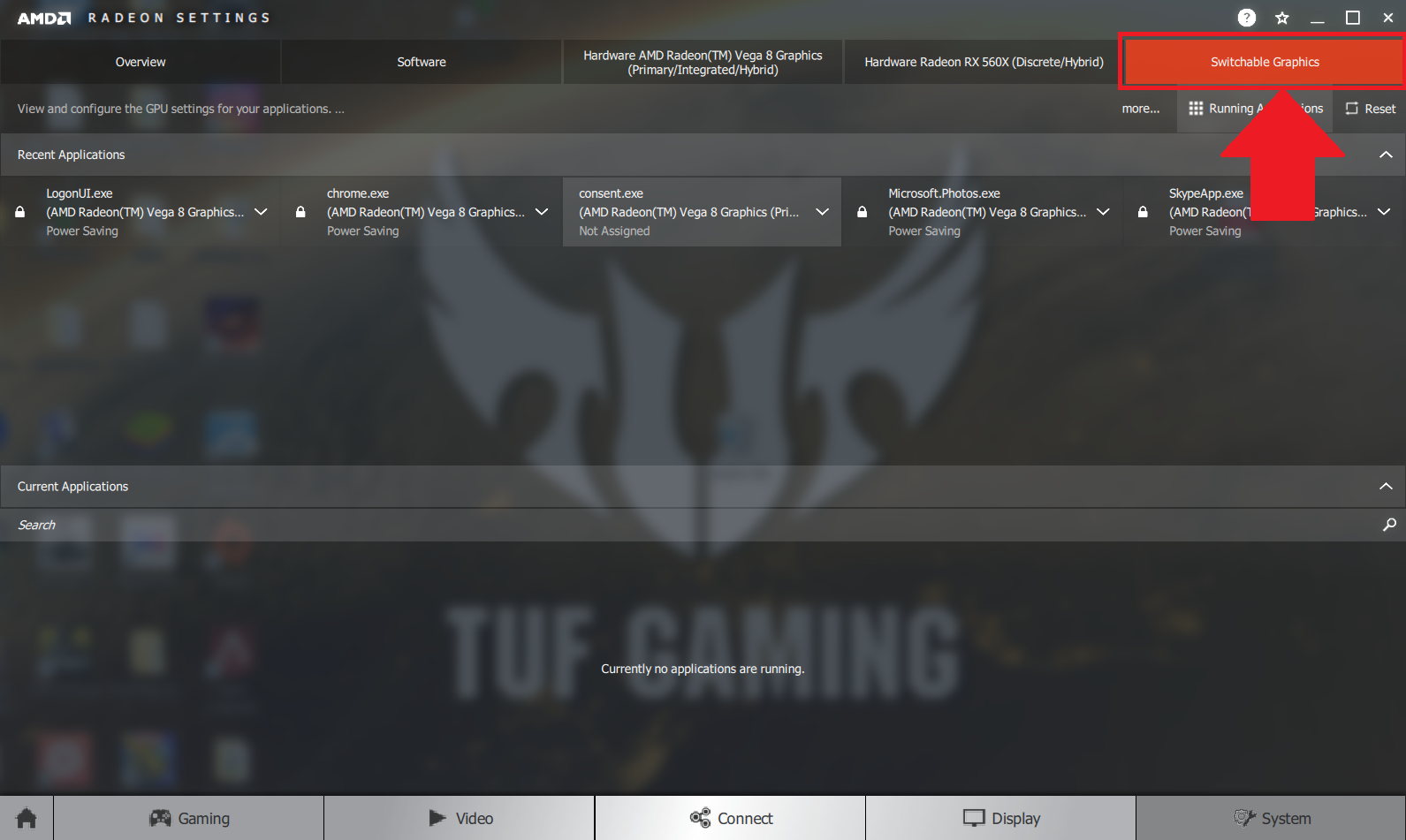
Step 3 - Under "Switchable Graphics" you will notice a button labeled "Running applications". If BlueStacks is open in the background while performing this step, the application will be shown here. Otherwise, you can click on the button and switch to "Installed Profiled Applications" as illustrated below.
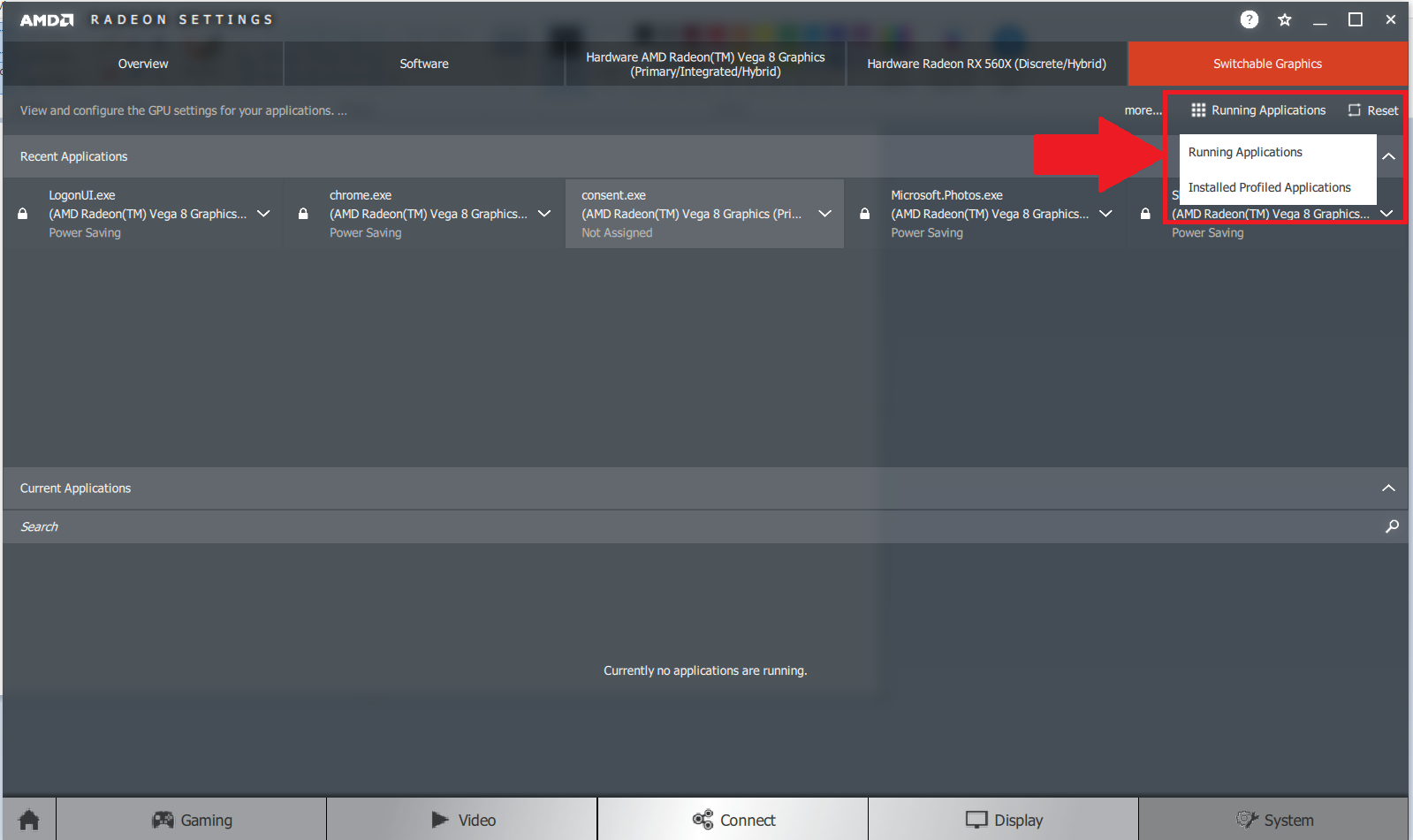
Step 4 - You will then see "BlueStacks.exe" in the tab below. You can then click it and change to "High performance" which will enhance the performance of BlueStacks.
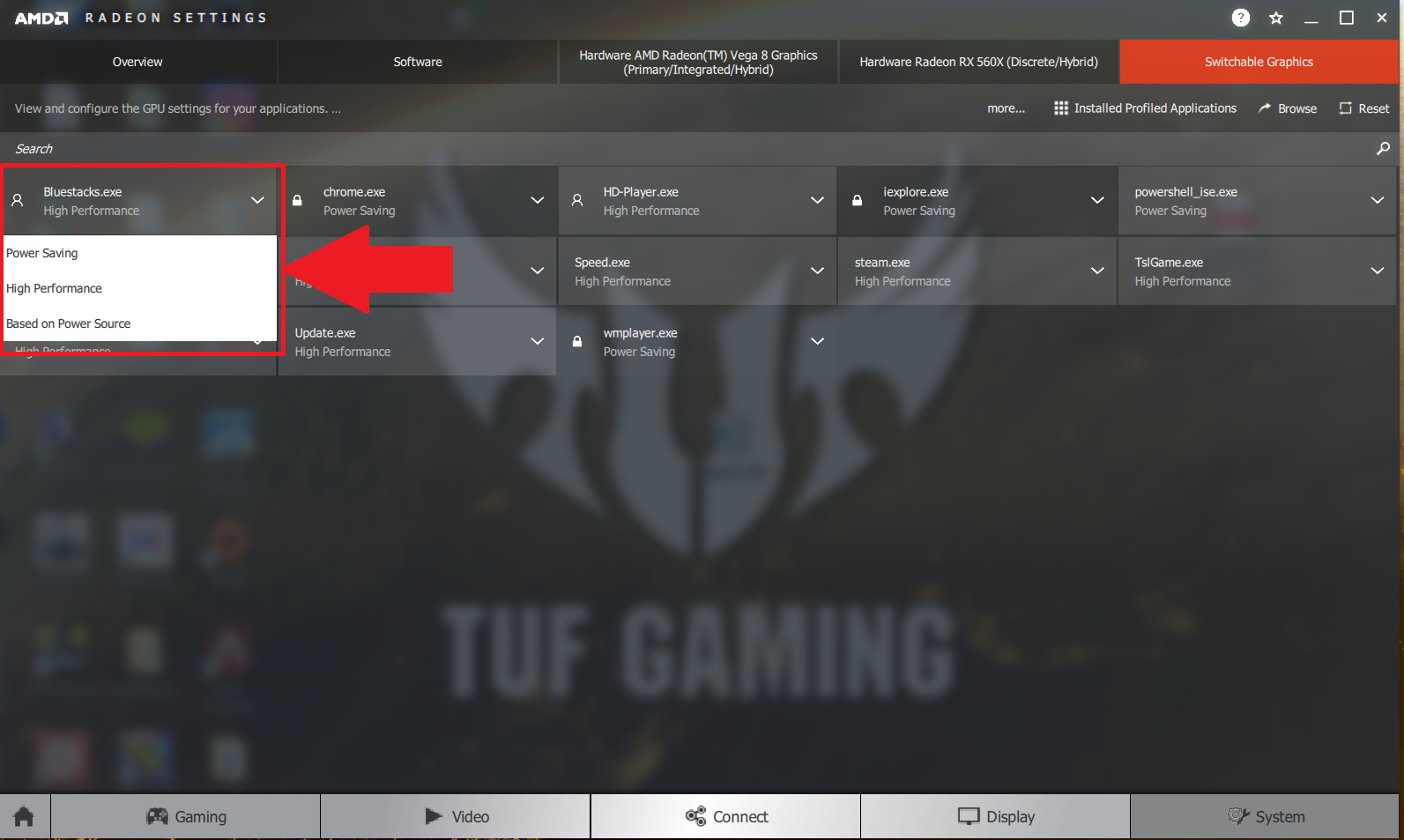
2) Switch to DirectX in BlueStacks settings
Changing to DirectX from OpenGL is explained in the steps below.
Step 1 - In BlueStacks, navigate to the settings menu either by clicking on the hamburger menu or on the gear icon on the bottom right of the sidebar as shown below.

Step 2 - In settings, go to "Engine" and switch from "OpenGL" to "DirectX" as illustrated below.
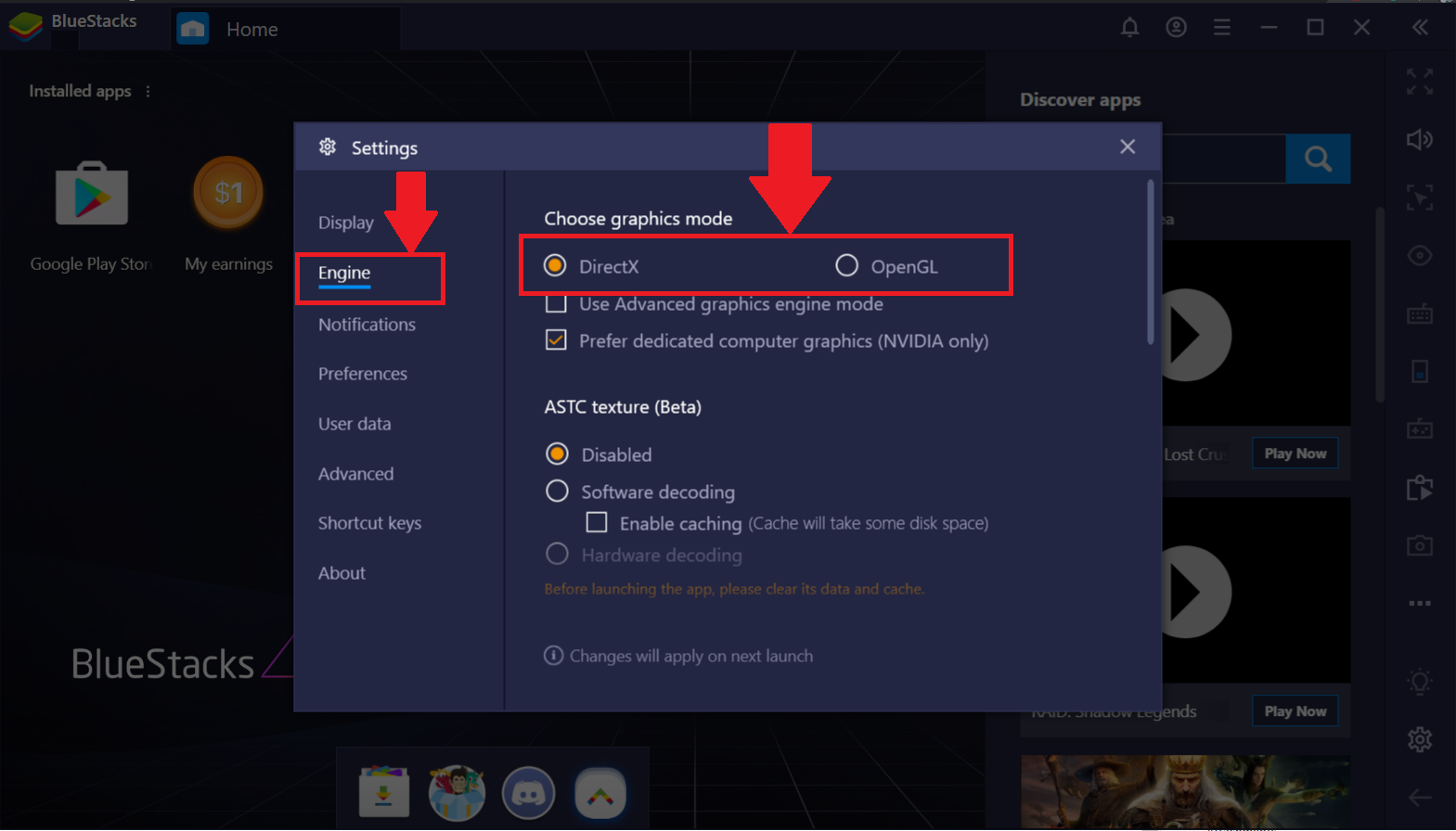
On switching, you will be prompted to restart BlueStacks to apply the new settings. You should notice an increase in the performance of games and other applications on these settings.
We genuinely appreciate your choosing BlueStacks. We hope you enjoy using it. If you have any further questions, please contact us at support at bluestacks dot com. Thank you very much.
Last updated on 18th December 2019.
How To Install Amd Graphics Driver In Windows 10 (32-64 bits)

